 A song thought forgotten can always be remembered. 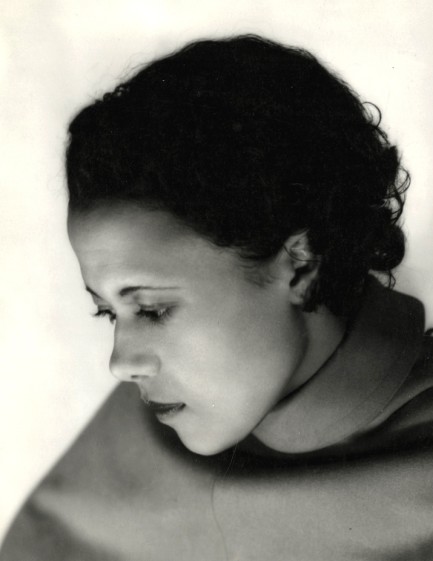
This photo shows Broadway actress Altonell Hines, who performed on the New York City stage during the 1930s in the shows Porgy and Bess and Four Saints in Three Acts. Unfortunately, like many early Broadway performers, after her career she faded into obscurity. However, she was somewhat rediscovered, partly thanks to a photographic portrait shot in 1934 by the famed Carl Van Vechten as part of an unfinished project titled, "Noble Black Women: The Harlem Renaissance and After.” The photo wasn't printed until 1983 when it went on exhibition at the Smithsonian Institute. Hines never saw it—she'd died in 1979.
Nevertheless, she's an interesting example of how obscurity never has to be permanent for stars of yesteryear. Archivists and biographers have always resurrected long dead public figures, but the creation of the internet has accelerated that process, and now hundreds of formerly forgotten personalities from history are restored into the cultural consciousness each year. It's the coolest thing about the internet, if you ask us. The above shot, which is not from the Noble Black Women collection, was made in 1935. You can see a few more images of Hines on the website of the New York Public Library, at this link.
 She was more than just a movie star.
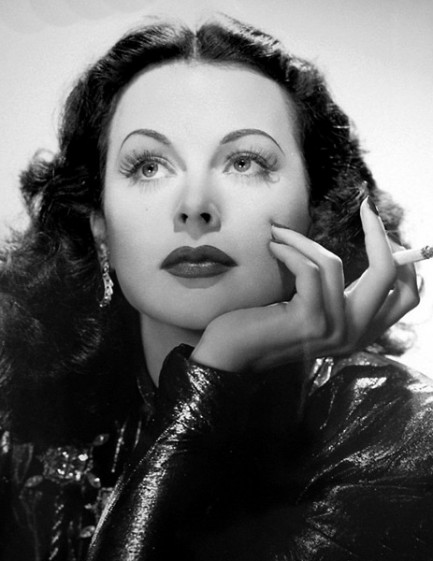 Smithsonian.com published an in-depth story yesterday about Austria-Hungary born Hollywood icon Hedy Lamarr, and how her technical genius helped bring the world Wi-Fi, Bluetooth, GPS, and cell phones. Hah! Get with it Smithsonian. We talked about this under-discussed aspect of her life years ago. Smithsonian.com published an in-depth story yesterday about Austria-Hungary born Hollywood icon Hedy Lamarr, and how her technical genius helped bring the world Wi-Fi, Bluetooth, GPS, and cell phones. Hah! Get with it Smithsonian. We talked about this under-discussed aspect of her life years ago. It's curious that no matter how many times people write about Lamarr's technological exploits it never seems to become a generally known aspect of her personality. Maybe people want to see her as a beautiful actress, and much of the interest stops there. The Smithsonian piece will probably help change that a bit, and it's well written also (though considering what digital technology has wrought we'd probably add the phrase "for better and worse").
Yesterday's piece comes in tandem with the Smithsonian's Washington D.C. based National Portrait Gallery acquiring a rare original Luigi Martinati poster painted to promote Lamarr's 1944 thriller The Conspirators. We have no idea what it cost, but certainly a pile of money, since Martinati was not just a great artist, but one who tended to focus more on portraiture in his promos. You can see what we mean just below, and by clicking here and scrolling. As for Lamarr, we'll doubtless get back to her—and all her interesting facets—later.
 Censored mural making grand reappearance in downtown Los Angeles. 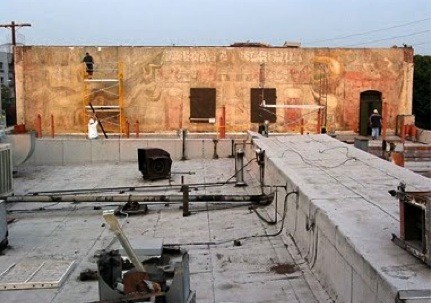
In 1932, during the heyday of pulp and in the midst of the Great Depression, a Mexican artist named José David Alfaro Siquieros was commissioned to paint an 18 by 80 foot mural on a wall above Olvera Street in downtown Los Angeles. Olvera Street at that time was a contrived copy of an idyllic Mexican village market, designed mainly to bring tourists to that part of town and help clean up L.A.’s image, which due to gangsterism and police corruption was as bad as those of places like Chicago and St. Louis. The mural’s theme was to be “Tropical America,” and when completed the piece would be partially visible from the street and would fully face City Hall. But Siquieros was aware that all around Southern California police were breaking up union meetings, beating ethnic minorities and deporting Mexicans—even those who were American citizens—by the boxcar-load. So instead of the idealized tropical mural his benefactors expected him to unveil, he used spray paint and bold colors to create a shocking protest piece. The central figure of the mural was a Mexican or Indian man bound to a strange, double cross with an American eagle perched above, talons extended. unveil, he used spray paint and bold colors to create a shocking protest piece. The central figure of the mural was a Mexican or Indian man bound to a strange, double cross with an American eagle perched above, talons extended. The piece embarrassed city fathers. It was immediately condemned and whitewashed, but not forgotten. Almost from the day of its censoring, Mexican-American activists fought to have the mural restored and now they’re getting their wish. Because of the covering of white paint, the original piece survived where it would otherwise have weathered into nothingness. Now the white paint is being cleaned off, and what remains of the original mural is set to go on display in 2012, with a digital image projected on top to fill out the colors and missing segments. Siquieros died in 1974 after a long career and copious acclaim. One of his most enduring murals adorns one of the buildings of the UNESCO protected Universidad Nacional Autónoma de México. When he wasn't paiting he found time to have many political adventures. For a time, he 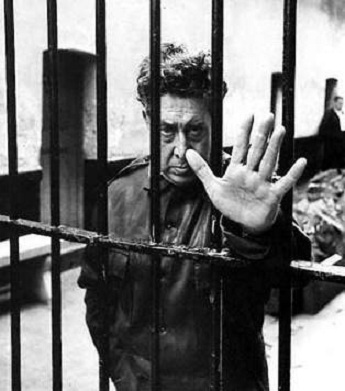 was forced to go into hiding because of his close links to a group that tried to assassinate Leon Trotsky. His political activities cost him numerous commissions, yet the quality and influence of the pieces he completed was undeniable, and he continued to grow in stature. was forced to go into hiding because of his close links to a group that tried to assassinate Leon Trotsky. His political activities cost him numerous commissions, yet the quality and influence of the pieces he completed was undeniable, and he continued to grow in stature. Today his art resides in places as far flung as Teheran and Washington, D.C.’s Smithsonian Institute, which is kind of funny when you consider those two countries can agree on art but little else. But in any case, to the list of places where Siquieros has made a lasting mark, he'll be adding, almost eighty years late, L.A.’s Olvera Street.
|
 |

The headlines that mattered yesteryear.
1939—Batman Debuts
In Detective Comics #27, DC Comics publishes its second major superhero, Batman, who becomes one of the most popular comic book characters of all time, and then a popular camp television series starring Adam West, and lastly a multi-million dollar movie franchise starring Michael Keaton, then George Clooney, and finally Christian Bale. 1953—Crick and Watson Publish DNA Results
British scientists James D Watson and Francis Crick publish an article detailing their discovery of the existence and structure of deoxyribonucleic acid, or DNA, in Nature magazine. Their findings answer one of the oldest and most fundamental questions of biology, that of how living things reproduce themselves. 1967—First Space Program Casualty Occurs
Soviet cosmonaut Vladimir Komarov dies in Soyuz 1 when, during re-entry into Earth's atmosphere after more than ten successful orbits, the capsule's main parachute fails to deploy properly, and the backup chute becomes entangled in the first. The capsule's descent is slowed, but it still hits the ground at about 90 mph, at which point it bursts into flames. Komarov is the first human to die during a space mission. 1986—Otto Preminger Dies
Austro–Hungarian film director Otto Preminger, who directed such eternal classics as Laura, Anatomy of a Murder, Carmen Jones, The Man with the Golden Arm, and Stalag 17, and for his efforts earned a star on Hollywood's Walk of Fame, dies in New York City, aged 80, from cancer and Alzheimer's disease. 1998—James Earl Ray Dies
The convicted assassin of American civil rights leader Martin Luther King, Jr., petty criminal James Earl Ray, dies in prison of hepatitis aged 70, protesting his innocence as he had for decades. Members of the King family who supported Ray's fight to clear his name believed the U.S. Government had been involved in Dr. King's killing, but with Ray's death such questions became moot.
|

|
|

It's easy. We have an uploader that makes it a snap. Use it to submit your art, text, header, and subhead. Your post can be funny, serious, or anything in between, as long as it's vintage pulp. You'll get a byline and experience the fleeting pride of free authorship. We'll edit your post for typos, but the rest is up to you. Click here to give us your best shot.

|
|



 Smithsonian.com published an in-depth story yesterday about Austria-Hungary born Hollywood icon Hedy Lamarr, and how her technical genius helped bring the world Wi-Fi, Bluetooth, GPS, and cell phones. Hah! Get with it Smithsonian. We talked about this under-discussed aspect of her life years ago.
Smithsonian.com published an in-depth story yesterday about Austria-Hungary born Hollywood icon Hedy Lamarr, and how her technical genius helped bring the world Wi-Fi, Bluetooth, GPS, and cell phones. Hah! Get with it Smithsonian. We talked about this under-discussed aspect of her life years ago.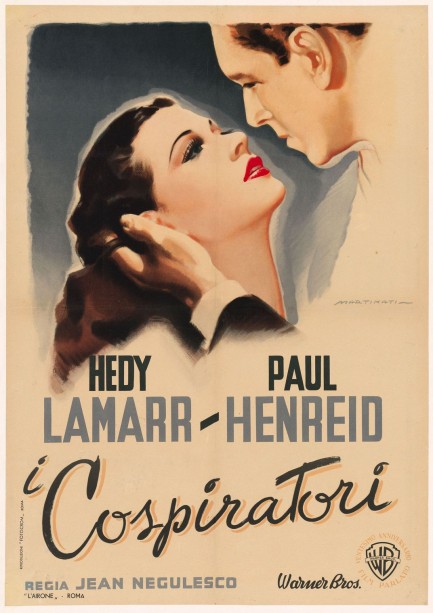


 unveil, he used spray paint and bold colors to create a shocking protest piece. The central figure of the mural was a Mexican or Indian man bound to a strange, double cross with an American eagle perched above, talons extended.
unveil, he used spray paint and bold colors to create a shocking protest piece. The central figure of the mural was a Mexican or Indian man bound to a strange, double cross with an American eagle perched above, talons extended. was forced to go into hiding because of his close links to a group that tried to assassinate Leon Trotsky. His political activities cost him numerous commissions, yet the quality and influence of the pieces he completed was undeniable, and he continued to grow in stature.
was forced to go into hiding because of his close links to a group that tried to assassinate Leon Trotsky. His political activities cost him numerous commissions, yet the quality and influence of the pieces he completed was undeniable, and he continued to grow in stature.



































































